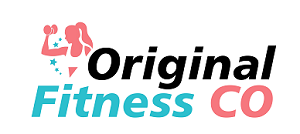Toned legs are a sign of fitness and health that many people aim for. Exercise is essential, but food is just as vital to reaching this objective. How to tone legs effectively involves combining strength training with proper nutrition. You may maximize muscle growth, fuel your body, and hasten your path to shaped legs by combining focused exercises with a healthy diet. The key nutritional elements that go well with your leg-toning exercise regimen are examined in this article.
Protein Power: Muscle’s Fundamental Component
The building block of muscle growth and repair is protein. Exercises for the legs cause tiny tears to occur in the muscle fibers. The amino acids required to repair and fortify these fibers are found in protein, which results in legs that are toned and defined. Lean meats like chicken and turkey, fish, eggs, beans, lentils, and Greek yogurt are all excellent sources of protein. To optimize muscle recovery, try to eat protein throughout the day, particularly after leg workouts.
Carbohydrates: Providing Energy for Your Leg Exercises
Carbohydrates are your main energy source, but protein is essential for muscle repair. Whole grains, sweet potatoes, brown rice, and quinoa are examples of complex carbs that give you long-lasting energy to get through your leg workouts. Steer clear of simple carbs, which can lead to energy dumps and impede your development. Examples of these include processed foods and sugary drinks. Eating carbohydrates prior to doing out can guarantee that you have the energy you need to work out efficiently.
Good Fats: Promoting Hormone Function and General Well-Being
Although they are frequently disregarded, healthy fats are essential for the synthesis of hormones that contribute to fat loss and muscle growth. Include in your diet foods such as avocados, almonds, seeds, olive oil, and fatty seafood. By lowering inflammation and promoting brain function, these fats also improve general health. But keep in mind that fats are high in calories, so eat them sparingly as part of a healthy diet.
Micronutrients and Hydration: Crucial for Performance and Recuperation
Water supports all physiological functions, including muscular function. Hydration helps remove waste and replenish muscles. Hydrate before, during, and after exercise. Muscle function and rehabilitation require water and micronutrients like vitamins and minerals. Eat a variety of fruits and vegetables to receive these essential nutrients.
Exercise and Dietary Balance for Best Outcomes
Toned legs require a thorough plan with focused exercises and a well-planned diet. Eat protein to restore muscles, complex carbs for energy, and healthy fats for hormones. Eat a variety of micronutrients and drink enough water to improve health and performance. Consistency is key. Combining this nutritious diet with frequent leg workouts can give you toned legs that show off your fitness and health.




